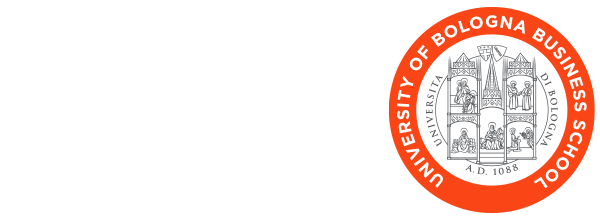In an ever-changing business landscape, the ability to adapt, reorganize and change direction in response to new situations is not just an added value, but a real necessity. This concept, known as Change Readiness, is a cornerstone of program management and strategic decision making. A particularly interesting case when it comes to illustrating this process in action is the journey of Dragonfly, a major reseller of CAD solutions in Italy. The transformation that occurred in the company, starting with the need to acquire a major client, became a Bologna Business School case study designed to be integrated into Change Management courses. The goal? To stimulate students in the development of proposals and solutions that harmonize technical aspects with cultural and social considerations.
Dragonfly, a company with a strong presence in architectural engineering, construction, and geospatial solutions, was at a crossroads in 2021. Despite annual profitability of 76.4 million euros, the company’s Manufacturing Business Unit was underperforming, with sales of only 7.6 million euros. Yet the manufacturing sector in Italy constitutes a crucial segment of the national GDP, generating a total turnover exceeding 73 billion euros. Within this market, a large number of medium- and small-sized companies operate actively, demanding large- and small-scale solutions useful to meet their specific needs. This scenario set the stage for a significant organizational change, which would test the company’s ability to adapt and evolve.
The person charged with making this change possible, ensuring new opportunities for the company, was Marco Lonati, Dragonfly’s manufacturing manager. Lonati, a seasoned professional, had been entrusted with the task of transforming the team, which was struggling with a high turnover and unable to win large projects. His main goal was to secure a major client, the Italian Advanced Technology Corporation (IATCo), which was preparing its budget for the fiscal year 2022. A long-term client for a large and structured project, very different from the small projects that had characterized the backbone of the business unit up to that point.
In turn, IATCo, a company that carries out engineering projects in various market sectors, on the other hand, was also grappling with its own challenges. Performance problems, particularly in the Mining, Oil and Gas unit, were a cause for concern, and the company’s board of directors had identified innovation in materials and construction techniques as the way forward, offering Dragonfly an opportunity to increase its presence and position itself as a trusted consultant.
To customize a practical approach for IATCo, Lonati chose to collaborate with Jason Hampton, a change management consultant he met in his previous post. Given the complexity of the Change Readiness model based on the measurement of five dimensions (Awareness, Leadership, Culture, Resources and Skills, and Self-Organization) Lonati and Hampton decided to focus on two parameters in particular of change readiness: awareness and culture. In this context, awareness was measured from an assessment of the total cost of an initiative, thus providing a tangible and quantifiable metric that could be easily understood and acted upon by the team. With regard to culture, on the other hand, the goal was to get to understand the stakeholders and their attitudes through a qualitative approach that provided valuable insights into the mindset and expectations of the people who would play a crucial role in driving change.
After extensive analysis and brainstorming, the team presented two hypothetical sales proposals to IATCo. The first scenario, in addition to considering training in 2D, 3D and Building Information Modeling (BIM) at 1,000 euros per day as an external cost, without a Product Lifecycle Management (PLM) system, also included five days of consulting to improve existing 3D design processes and a small customization for platform integration to transfer data to the ERP, for a total external cost of 3,000 euros. Implementation time would have been about 6 weeks, with initial implementation costs of 53,000 euros and maintenance costs of 33,000 euros per year. This proposal represented a comprehensive approach that would meet IATCo’s immediate needs while providing value-added services. Hypothesis 2 was based on Hypothesis 1, adding PLM modules and related activities. The PLM included 40 days of process consulting and the implementation time was between four and six months. The cost of process review was not included, and initial implementation costs were divided between 68,000 internal and 95,000 external. Maintenance costs were 76,000 euros internal and 38,000 euros external, mainly for PLM training.
Hypothesis 1 was within the budget already anticipated to Lonati by IATCo CIO Vanessa Aliprandi, while hypothesis 2 exceeded the 75,000 euro target and indicated the need for long-term engagement with PLM, a benefit not unanimously recognized by IATCo’s board of directors. After presenting the two scenarios, the team expected the work to be finished, but Marco challenged them to perform a self-assessment using just the Change Readiness model. Despite initial resistance and confusion, Lonati guided the team to consider various aspects, including critical customer needs, how to sell the proposal, and the board’s influence on behaviors and processes. The session ended with an invitation to evaluate the proposals in the context of IATCo’s culture, emphasizing the need to consider how the two hypotheses would change behaviors and processes. The internal team discussion thus set the stage for further analysis and reflection, with Hampton beginning by outlining the readiness-for-change analysis for the team.
This case study highlights the importance of change preparedness in strategic decision making. By focusing on awareness and culture, Dragonfly was able to package a proposal that not only met IATCo’s needs but also laid the foundation for significant organizational transformation. This reminds us that companies need to be adaptive, aware and culturally sensitive to make strategic decisions and manage change effectively. It also underscores the importance of a well-thought-out strategy, a deep understanding of customer needs, and the ability to present a compelling proposal that is aligned with customer objectives.



